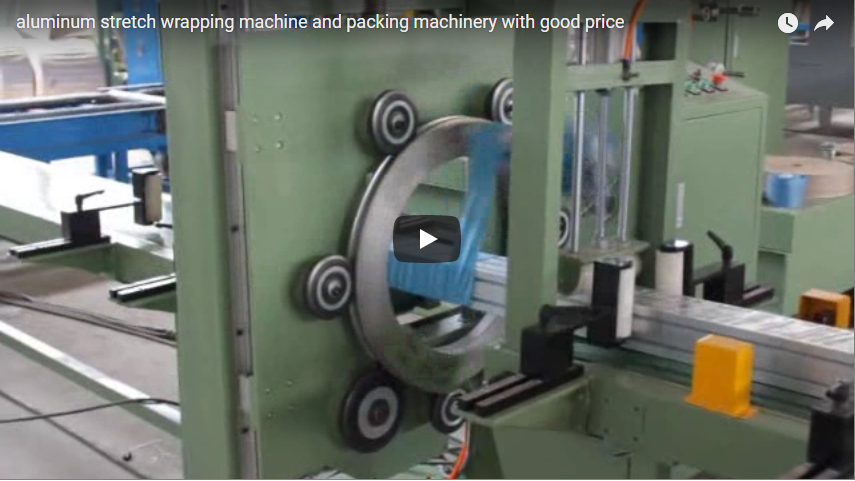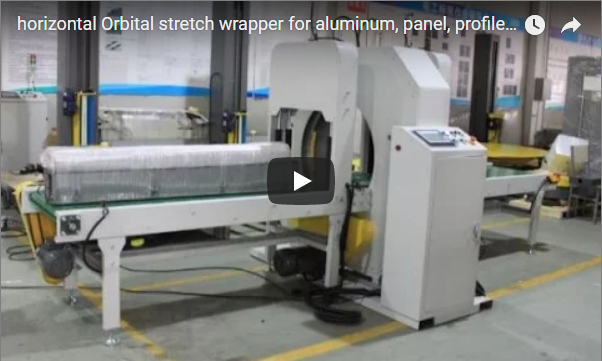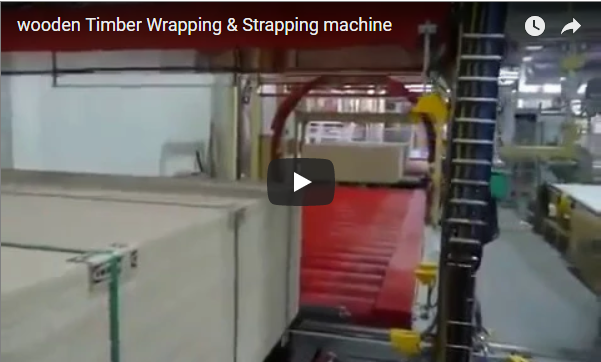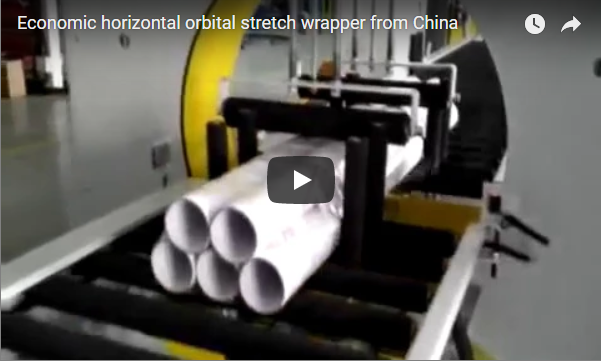In today's fast-paced logistics and manufacturing environments, ensuring palletized goods arrive securely and undamaged is paramount. While standard pallet wrappers handle conventional loads effectively, what about oversized, long, or unstable products? This is where specialized equipment like the Horizontal Orbital Stretch Wrapper truly shines, offering a unique approach to load containment and stabilization.
Unlike traditional turntable wrappers where the pallet spins, a horizontal orbital stretch wrapper keeps the load stationary. Instead, a ring carrying the stretch film roll orbits horizontally around the pallet as it moves along a conveyor. This method is particularly advantageous for products that are too long, heavy, or unstable to be rotated safely at high speeds. Many models also integrate pallet strapping capabilities, providing a comprehensive securing solution in a single machine pass.
Let's delve deeper into the specifics:
1. Understanding the Mechanics: How Horizontal Orbital Wrappers Excel
The core principle involves passing the pallet through a rotating ring. This ring dispenses the stretch film, applying it horizontally around the load.
- Stationary Load: The pallet remains still relative to the wrapping motion, preventing shifting of unstable items.
- Horizontal Orbit: The film dispenser travels around the load on a vertical ring, applying consistent tension horizontally.
- Conveyor Integration: Pallets typically move through the wrapping zone on a conveyor, allowing for seamless integration into automated packaging lines.
- Film Pre-Stretch: Advanced models feature powered pre-stretch carriages that elongate the film before application, maximizing film yield and enhancing load holding force.
2. Key Technical Specifications to Consider
When evaluating a horizontal orbital stretch wrapper, several parameters are crucial:
- Ring Diameter: Must accommodate the largest diagonal cross-section of your pallets/products. Common sizes range significantly based on application needs.
- Maximum Load Dimensions (L x W x H): Defines the physical limits of the pallets the machine can process.
- Rotation Speed (RPM): Impacts throughput (pallets per hour). Needs balancing with load stability.
- Film Pre-Stretch Ratio: Typically ranges from 150% to 300%. Higher ratios mean more film efficiency but require quality film.
- Control System: Usually PLC-based, allowing customizable wrap programs (number of wraps, tension control, strapping activation).
- Strapping Integration: If included, specifies strap type (PP or PET), tension range, and sealing method (e.g., friction weld).
3. Unpacking the Advantages: Beyond Basic Load Containment
From practical experience, the benefits of using a horizontal orbital wrapper become clear, especially in specific scenarios:
- Enhanced Stability for Challenging Loads: This is the primary advantage. Long items (lumber, pipes, doors, windows), flat panels, or irregularly shaped pallets are wrapped securely without the centrifugal forces of a turntable.
- Optimized Film Consumption: When equipped with pre-stretch, these machines significantly reduce the amount of film used per pallet compared to manual wrapping or machines without pre-stretch, directly cutting material costs.
- Increased Throughput: Automation speeds up the wrapping and strapping process compared to manual methods, improving overall packaging line efficiency.
- Reduced Labor Costs & Improved Safety: Automating the process minimizes manual handling, reducing labor requirements and the risk of musculoskeletal injuries associated with manual wrapping.
- Consistent Wrap Quality: Automated application ensures every pallet receives the same programmed wrap pattern and tension, leading to predictable load security.
- Combined Wrapping & Strapping: Integrating both functions streamlines the packaging process, saving floor space and reducing handling time between separate machines.
4. A Personal Perspective: Real-World Insights & Efficiency Gains
Having worked with various packaging systems, I've seen firsthand the difference a horizontal orbital wrapper makes. For businesses handling products like assembled furniture, large construction materials, or bundled extrusions, conventional wrapping often falls short. The orbital approach provides that crucial 360-degree horizontal containment that prevents product movement and damage during transit. We consistently observed a notable reduction in shipping damage claims for clients who adopted this technology for their challenging loads. Furthermore, the integration of strapping within the same cycle is a significant workflow improvement, eliminating a bottleneck often seen with separate strapping stations.
5. Ideal Applications: Where This Technology Shines
Horizontal orbital stretch wrappers are indispensable in sectors dealing with:
- Doors and Windows Manufacturing
- Lumber and Timber Processing
- Pipe, Tubing, and Extrusion Industries
- Furniture Manufacturing and Distribution
- Large Panel Products (e.g., Insulation Boards, Sheet Metal)
- Bundled Goods
In conclusion, the horizontal orbital stretch wrapper, particularly models with integrated strapping, represents a sophisticated and highly effective solution for securing difficult-to-handle palletized goods. It directly addresses the limitations of traditional wrapping methods, offering enhanced load stability, improved efficiency, and potential cost savings through automation and optimized film usage. For any operation struggling with wrapping long, heavy, or unstable loads, exploring this technology is a worthwhile investment.
For more insights into various wrapping technologies, you might find this overview helpful: https://www.fhopepack.com/Stretch_wrapping_machine.html
For specific inquiries or consultation on your packaging needs:
info@fhopepack.com






